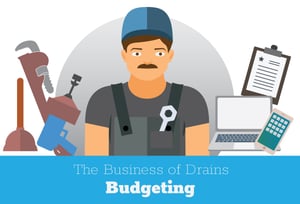 Eighty-two percent of all businesses fail because of poor money management. Given this number, ensuring effective money management should be a priority for any small business looking to thrive and succeed in today’s economic environment. And having a thought-out, well-written and executable budget is a necessary component of running a business that can withstand common financial roadblocks. Budgeting can help your business become financially sustainable by helping you:
Eighty-two percent of all businesses fail because of poor money management. Given this number, ensuring effective money management should be a priority for any small business looking to thrive and succeed in today’s economic environment. And having a thought-out, well-written and executable budget is a necessary component of running a business that can withstand common financial roadblocks. Budgeting can help your business become financially sustainable by helping you:
- Prepare for the unexpected. Emergencies happen in both life and business. A sustainable budget helps you save and set aside funds for emergencies, so that when the time comes to crack into your account, you’ll be ready.
- Set goals. Without direction, it is difficult to run a company well. You need to know where you’re headed and what your future holds. A budget gives you that direction by helping you set expectations and meet your financial goals.
- Make better decisions. Without knowledge of the facts, making tactful, informed spending decisions becomes a challenge.Your budget gives a complete view of your income and expenses in one comprehensive spreadsheet in order to help you make financial decisions objectively.
Creating a Budget
Jumping into creating a budget is often the hardest part. Business owners get so tied up on their day-to-day routine that taking time to assess the broader financial health of the company falls by the wayside. Start by setting aside time specifically for financial planning. Then follow these steps to be on your way to creating a meaningful budget.
- Calculate all of your expected costs. There are many costs involved with plumbing and drain cleaning businesses. Be sure to include all of those costs in your budget, and never skimp on expenses when putting down numbers.
Bonus Tip: Remember to budget for expenses that don’t occur monthly but are important for your business, like equipment. These expenditures can be hefty, and if they are not properly accounted for, they can cause unnecessary burdens. - Set your sales goal. The second step is determining your sales goal. Laying out expenses gives more insight into your business numbers and helps you determine how much money you need to make a profit. What are your income goals? Use MyTana’s Hourly Rate Calculator to help figure out the best rate to achieve them.
- Make it digital. Using programs like Google Sheets or Excel can make your budget more actionable.These programs allow you to test out different scenarios and see how each variable impacts your bottom line. Also, having a digital version of your budget helps you refine it as you learn more about your business over time.
- Verify your budget and improve it. A budget is a working document. After your budget is created, your work is not finished. You need to verify your budget and continuously adjust it as needed. Every month, compare your numbers. If your expenses are higher than the ones on your budget, evaluate the circumstances. Were expenses elevated this month only, or do you need to change how much you allot for them on a regular basis? Tweaking and reassessing your budget regularly will help you understand and protect your business.
Getting Started with Budgeting for Plumbers and Drain Cleaners
If you’re unsure about creating a budget, put your nerves aside. The sooner you start, the sooner you can improve your business. Sit down, start calculating and begin to evaluate your expenses. Understanding your cash inflow and outflow will help you understand your business and plan for the future.
Need help understanding some of the major costs that come with a typical plumbing or drain cleaning business? Check out MyTana’s Hourly Rate Calculator. This calculator lays out some common expenses and can also help you figure out a sustainable hourly rate for your business. Click below to learn more:




